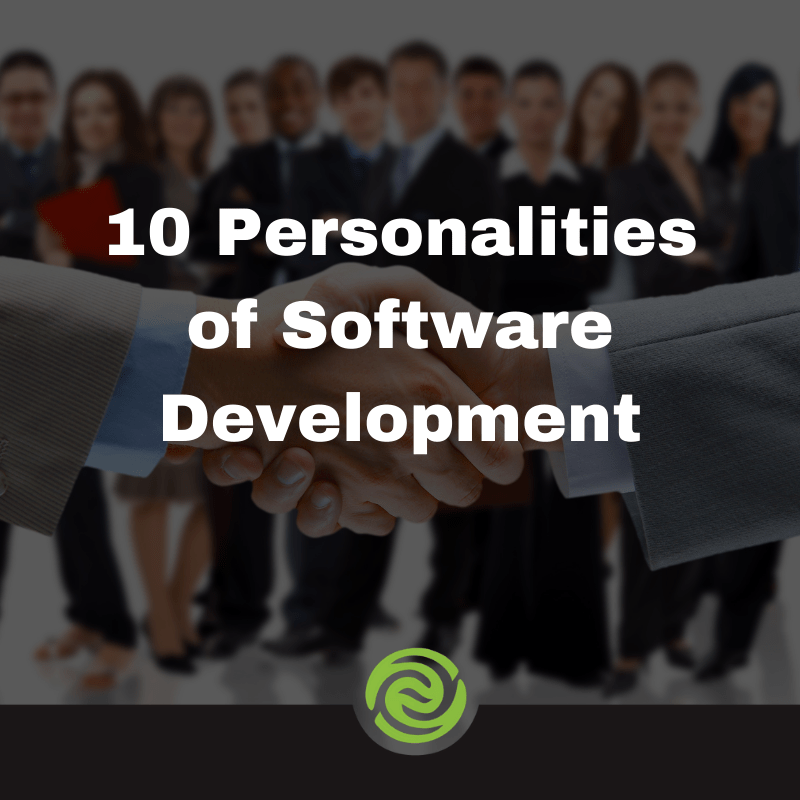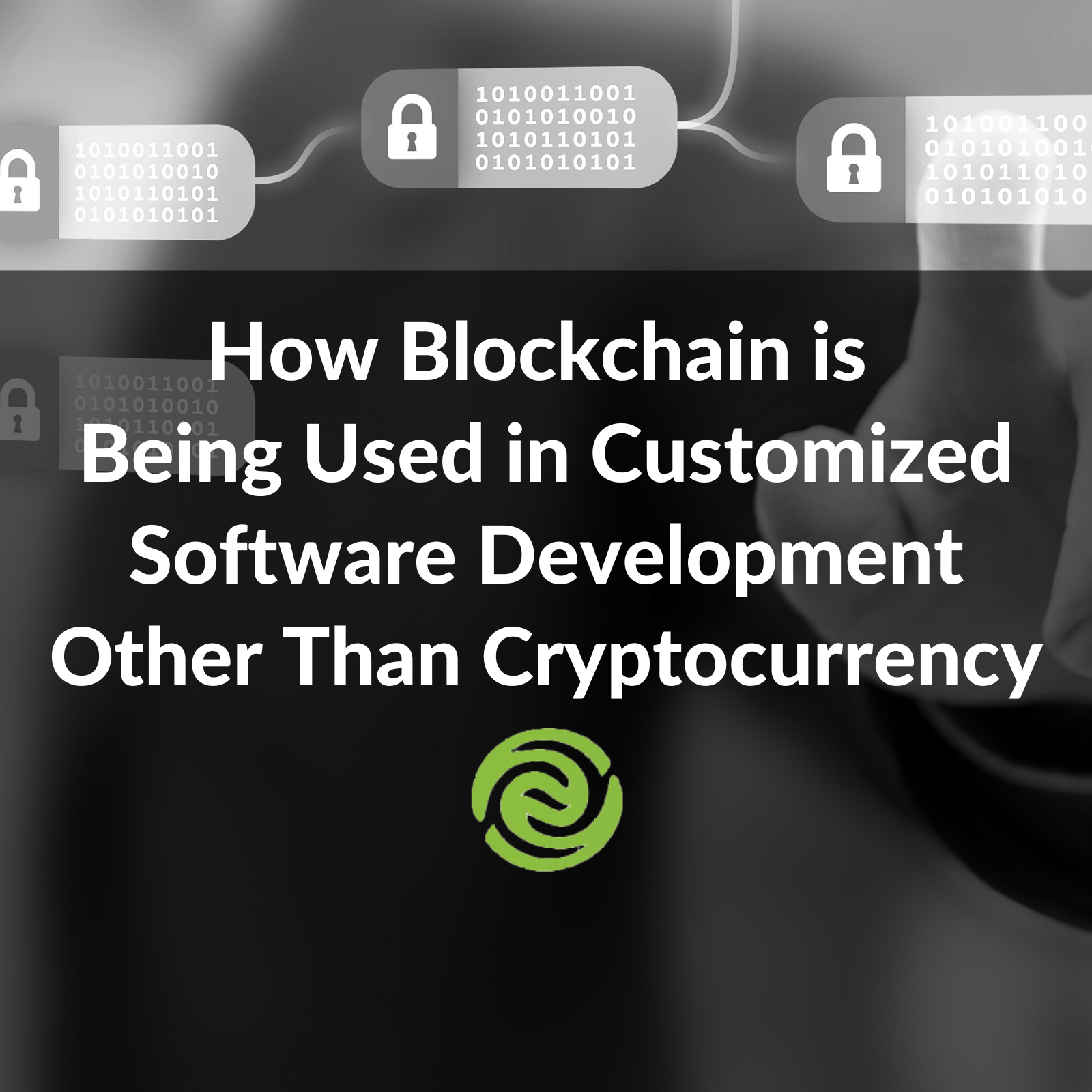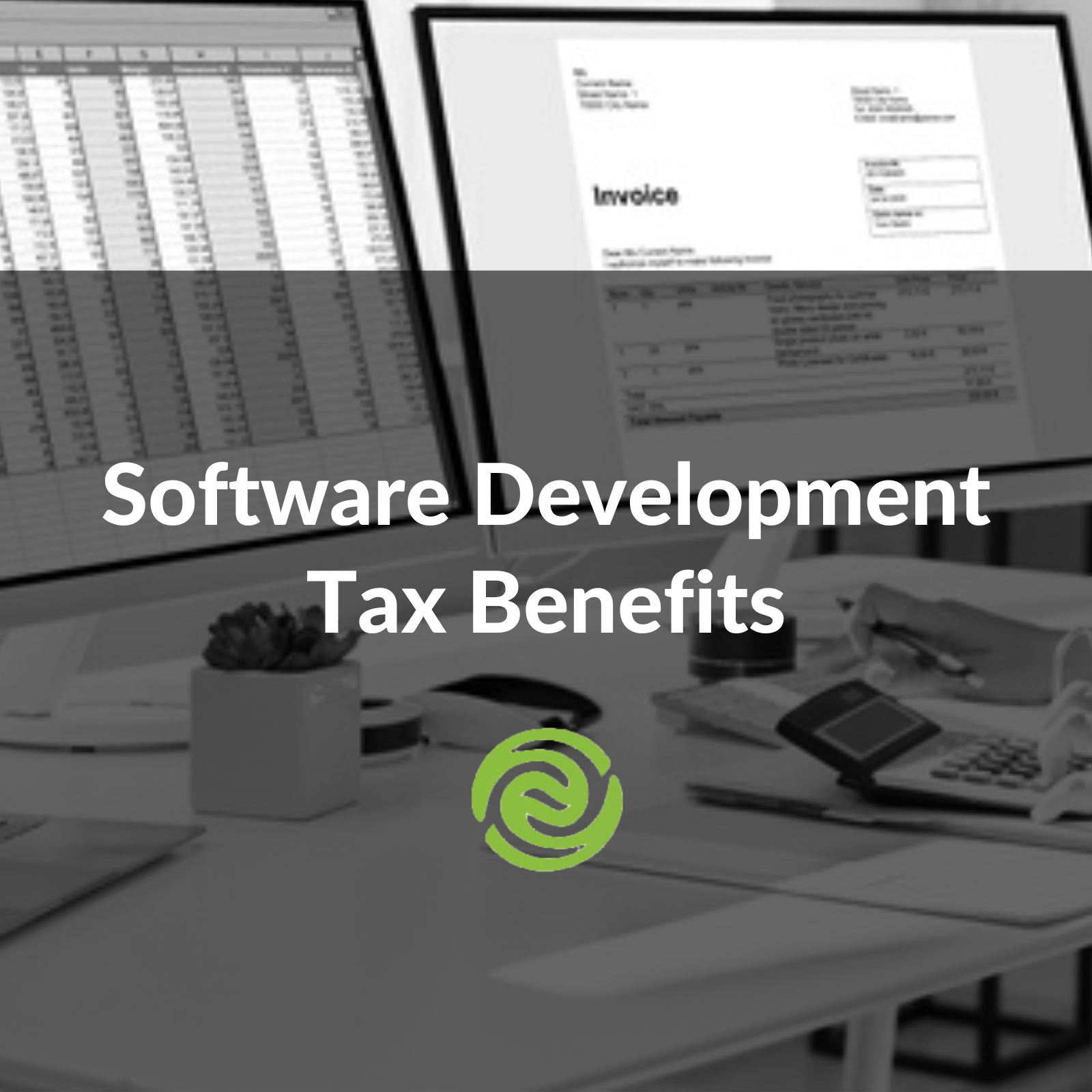You may have heard of Blockchain for cryptocurrency, but did you know this technology also…
10 Personalities of Software Development
 We thought we would take a segue from our typical informational blog posts and put together a fun look at some of the different personalities we’ve met along the way. Over the course of 22+ years, we’ve had the privilege of working with some really great people… some more interesting than others. Here are 10 personalities of software development you may encounter…
We thought we would take a segue from our typical informational blog posts and put together a fun look at some of the different personalities we’ve met along the way. Over the course of 22+ years, we’ve had the privilege of working with some really great people… some more interesting than others. Here are 10 personalities of software development you may encounter…
1. The First Timer
“Technology is really exciting!”
There is a first time for everything, especially in the world of technology. The first of the 10 personalities is the“first-timer”…

This person may have jumped into the world of technology because it is “sexy” but often has no understanding of how technology is built. This includes a lack of knowledge of SDLC – Software Development Life Cycle, or the importance of MVPs – Minimum Viable Products. A lack of knowledge of these important concepts can lead to scope creep, budgetary issues, and everything else getting blown out of the water. Much of this can be learned over time, but there is a risk of becoming “The Hands Off Client” or “The Expert” personality… see below.
If you find that you are working with The First Timer… draw out a timeline of the work involved for each step of the project. When working on the initial planning phases, talk through the processes and provide plenty of resources this person could learn from, if they wish. Keeping them educated on the process while involving and informing them along the way is key.
2. I Want it All Now
“Let’s add all these new features by next week.”
Another personality that emerges in software development projects is the “I Want it All Now” personality. This person has no regard for MVPs – Minimum Viable Products, they want everything done in the first version and have higher expectations than their budget.
They are often uninformed about the software development process and have a self-centered tendency to want to be the next big thing. This often leads to extravagant requests despite consulting on what is actually best for their company. Even with coaching throughout the process, this person often just won’t listen.
If you find that you are working with I Want it All Now… provide an understanding of the complexities behind each item in the overall project. Provide an associated cost so they can see how each item impacts the timeline and budget. Be clear and upfront with expectations and communicate often. Help them establish a V 1.0 and decide on a realistic MVP to bring them back down to a realistic deliverable.
3. The Hands Off Client
“You’re the expert, you should know this!”
The typical response to every question from this person is some variation of… “You are the expert, shouldn’t you know this!” This person is too busy to focus on the project, or this is their first engagement with a technology project… see “The First Timer.”

They are afraid of looking silly or making a mistake, which leads them to distance themselves from the project. The challenge with this is the lack of input they give during a project, especially in the area of their subject matter expertise. This leads to frustration about everything being “wrong” along the way.
If you find that you are working with The Hands Off Client… spend some time getting to know them. How can you leverage their subject matter expertise? Where do they feel comfortable contributing that expertise to the project? Finding a way to bring their knowledge to the project will help them feel connected and establish the importance of their contribution.
4. The Control Freak
“There is a glitch, the project is ruined! “
The Control Freak is the most time consuming of the 10 personalities. This person requires constant hand-holding, needs constant updates, and wants everything done now… see the “I Want it All Now!” personality. A key trait for this personality is asking far too many questions each step of the way, which in turn hinders progress.
If there is a bug in the software, a mountain is made from the molehill. This personality has the “Chicken Little” overtone… the sky is always falling and one bug means the whole system is crap. This personality is also often referred to as the “detail guy…” someone who nitpicks at every small detail without a consideration for the big picture. All of these elements make the overall project difficult to complete.
If you find that you are working with The Control Freak… schedule set times for updates that can be followed by questions. When a bug is discovered, quickly provide a solution or action plan. Take extra time to polish to the version to alleviate nitpicking at something you just haven’t finished yet. Refer back to the big picture if this person starts getting too bogged down in details.
5. The Expert
“The last time we did this, it worked better to do it this way.”

The name of this personality basically describes itself. The expert has “done it all before,” they know everything and no one can tell them a better way to do things. Ideas are shut down, suggestions are dismissed and advice is ignored. Previous experiences are used to back up their claims of what they know, or they cite an outside “expert” to back up their opinion.
The challenge in with working with the expert is their ego. Their ego gets in the way of the success of the project. The person is more concerned with being right than the project being done correctly.
If you find that you are working with The Expert… take time to listen to their opinion and do not directly tell them they are wrong. If a differing opinion is expressed, talk through the options with them to determine what works best. This is time-consuming, but allows you to discover what they truly want in the project, and also acknowledges their expertise. They will eventually realize a different option is possible, or perhaps you’ll learn something new.
6. Can’t Get Off the Fence
“I am not sure, let me think about it and get back to you.”
Perhaps the opposite of many of the other 10 personalities, the “Can’t Get Off the Fence” personality makes a project nearly impossible to get moving. To begin, they are often unsure if they even want to do the project. They can’t decide if they want to spend the money and won’t make a decision to save their lives.
Even if the project is able to begin, each step is halted by analysis paralysis. If they are in a key project leadership role, they rely on everyone else’s input and stumble on even the smallest decision for the smallest detail.
If you find that you are working with Can’t Get Off the Fence… work to limit the amount of decisions that are required in each step of the process. When you can, boil each decision down to two options. Provide hard deadlines for each decision and ask for information as soon as you know you will need it. You also need to be prepared to help the individual through the decision making process.
7. The Nickel & Dimer
“What do you mean it’s going to cost more?!?”

The dreaded nickel and dimer… this personality is a close contender for the inventor of scope creep. Not only do they nickel and dime on the insignificant details, they have unrealistic expectations every step of the way. They want Facebook but are only willing to pay for Reddit. As the project develops, the requested features grow exponential while the expected price and delivery date remain the same.
If you find that you are working with The Nickel & Dimer… the key is to show value. Work to show the value each step of the way. Present costs by showing the return they will get from the investment. For example, a feature may cost 10% more, but will save hundreds of employee hours down the road.
8. The Idea Guy
“Well that is nice, but what if we did it this way and added these features.”
The idea guy invented scope creep. This personality has tons of project ideas but no idea how to make them work, or how to even get started. It may be unclear what the project is about, or even how many projects will be required. With so many ideas and decisions, this personality often goes hand in hand with the “Can’t Get Off the Fence” personality.
If you find that you are working with The Idea Guy… start with a meeting to talk through their ideas. Ask lots of questions, taking each idea deeper until you can peel back the layers and see what the actual needs are. Establish a plan with clear expectations from the beginning and have all parties agree to them. If any additional ideas come up, add them to a parking lot and schedule a separate meetings to develop them into separate costs and additional projects.
9. The Group Thinker
“We need to get Nancy and Jim’s input on this.”

This personality can be both good and bad. The benefits of working with a Group Thinker is that they are open to suggestion and supportive of their team. A downside of this personality type is that they may involve too many people with conflicting requirements. This can hinder progress and cause challenges in the decision-making process.
Having lots of people involved in a project can help move the project along and provide a greater breadth of expertise. When groups of people work together, it allows for a greater chance of project success. Unfortunately, more people also means more communication and more schedules to coordinate. While a larger group may be good for getting someone to answer a question, meetings that require all participants can be difficult to schedule.
If you find that you are working with The Group Thinker… focus on good communication and solid organization skills. Find out who the key decision makers are. Set up recurring meetings where all people can make attendance a priority. Establish a process for communication to ensure everyone involved is easily kept up to date with the information they need.
10. “Smooth Sailing”
“Let’s make this project happen!”
Our last personality is Smooth Sailing. The “Smooth Sailing” personality is a person with realistic expectations… They understand that plans have to be tweaked to the environment, that things will come up that no one thought of, and that communication is key to the success of the project.
They are aware of the importance of the MVP – Minimum Viable Products concept. They understand that scope creep can kill a project, that bugs are just one more part of the software development process and that you can’t put together a timeline and build software to meet the timeline… you have to put together a plan then build the timeline around it.
If you find that you are working with Smooth Sailing… focus on good communication and openness about the project and what is going on with it. Keep them informed at every step of the way, even if the news is not so perfect. Be upfront about unexpected costs and appreciative of their understanding of the process.
The Bottom Line…
When working on big projects with several people involved, one or more of these personalities are likely to emerge. We hope you have had some fun with this post and received some helpful insights for working successfully with all personality types.






